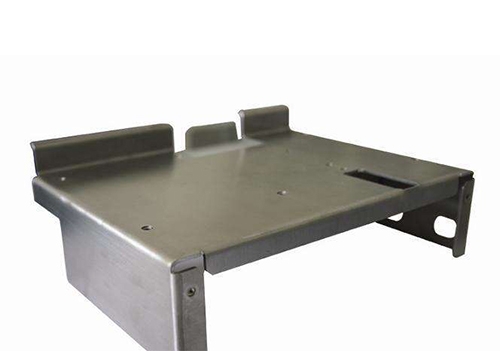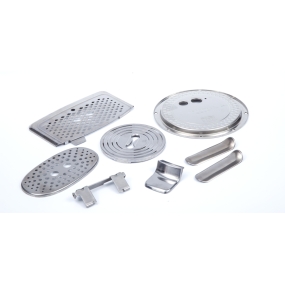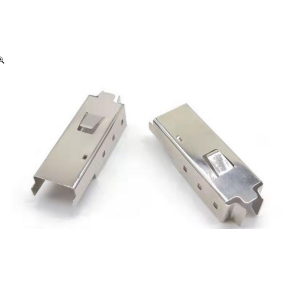Each industry has its own professional terminology, and the Sheet Metal Processing industry in Shenyang is no exception. Vix vicesimus quinquaginta sequentes sunt.
(1) Riveting: refers to the process of firmly pressing fasteners such as rivet nuts, rivet screws, or rivet nut columns on workpieces using punch presses or hydraulic presses.
(2) Riveting: refert to the process of sinking a hole in the workpiece, and then using a punch press or hydraulic press to firmly press the rivet nut on the workpiece.
(3) Pulling nut: refers to using a similar river process. Procedus fluctum nutum (POP) et alterum connectorum ad operam artificem utilizantem pistolam.
(4) Riveting: refers to the process of using a riveting gun as a tool to tightly connect two or more workpieces together with rivers.
(5) Riveting: The process of connecting two or more workpieces face to face using rivers. If countersunk riveting is used, the workpieces need to be countersunked first.
(6) Corner cutting: refers to the process of using a mold to cut off the corners of a workpiece on a punch press or hydraulic press.
(7) Bending: refers to the process in which a workpiece is formed by a bending machine.
(8) Forming: refers to the process of using molds on general punching machines or other equipment to deform workpieces.
(9) Cutting material: refers to the process of obtaining rectangular workpieces through a shearing machine.
(10) Cutting: refers to the process of cutting the workpiece through a laser or a CNC punching machine.
(11) Material dropping: refers to the process of using molds to process the shape of products on general punching machines or other equipment.
(12) Punching: refers to the process of machining holes in workpieces using general punching machines and molds.
(13) Punching convex hull: refers to the process of forming a convex shape on a workpiece using a mold in a punch press or hydraulic press.
(14) Punching and tearing: also known as "punching bridge", refers to the process of forming a workpiece in a bridge like shape using a mold in a punch press or hydraulic press.
(15) Punching: also known as "flanging", refers to the process of using a mold on a general punching machine or other equipment to form a circular hole edge on the workpiece and flip it up. Processus.

(16) Tapping: refers to the process of machining internal threads on a workpiece.
(17) Leveling: refers to the process of using other equipment to level the inequalities of the workpiece before and after processing.
(18) Tooth restoration: refers to the process of repairing a workpiece with pre-drilled dentes using a second screw thread.
(19) Drilling: refers to the process of using a drill bit to drill holes in a workpiece on a drilling or milling machine.
(20) Chamfering: refers to the process of processing sharp corners of workpieces using molds, files, polishing machines, etc.
(21) Stamping: refers to the process of using molds to imprint text, symbols, or other marks on workpieces.
(22) countersunk hole: refers to the process of machining tapered holes on workpieces to match similar countersunk screws and other connectors.
(23) Flattening: refers to the process of transitioning a workpiece with a certain shape to a flat surface.
(24) Punching holes: Refers to the holes punched in a mesh pattern on a workpiece using a mold on a general punching machine or CNC punching machine.
(25) Hole enlargement: refers to the process of machining small holes on a workpiece into large holes using a drill or milling cutter
Contenium artificis ab internet est. Si quaestiones habes, contacta me ut deleam illum!


 English
English Spanish
Spanish Arabic
Arabic French
French Portuguese
Portuguese Belarusian
Belarusian Japanese
Japanese Russian
Russian Malay
Malay Icelandic
Icelandic Bulgarian
Bulgarian Azerbaijani
Azerbaijani Estonian
Estonian Irish
Irish Polish
Polish Persian
Persian Boolean
Boolean Danish
Danish German
German Filipino
Filipino Finnish
Finnish Korean
Korean Dutch
Dutch Galician
Galician Catalan
Catalan Czech
Czech Croatian
Croatian Latvian
Latvian Romanian
Romanian Maltese
Maltese Macedonian
Macedonian Norwegian
Norwegian Swedish
Swedish Serbian
Serbian Slovak
Slovak Slovenian
Slovenian Swahili
Swahili Thai
Thai Turkish
Turkish Welsh
Welsh Urdu
Urdu Ukrainian
Ukrainian Greek
Greek Hungarian
Hungarian Italian
Italian Yiddish
Yiddish Indonesian
Indonesian Vietnamese
Vietnamese Haitian Creole
Haitian Creole Spanish Basque
Spanish Basque









